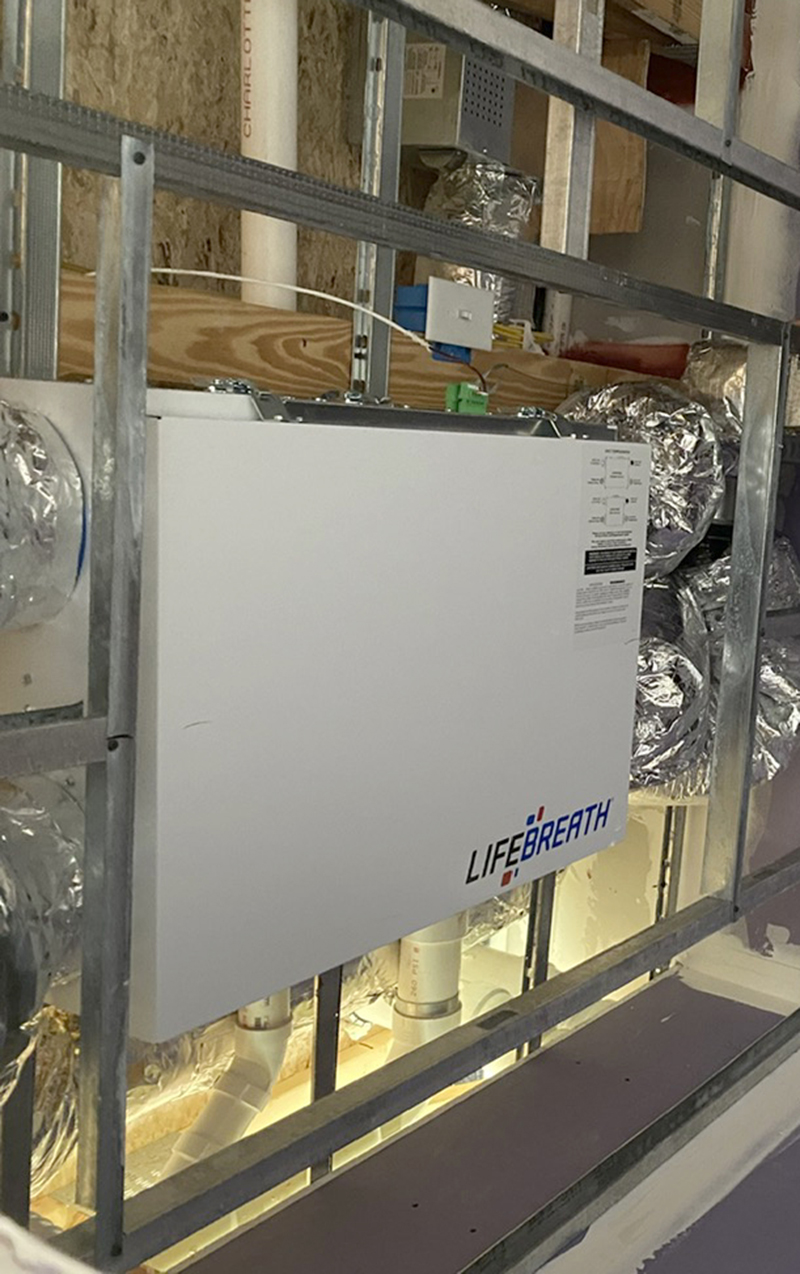Preconstruction key to balancing economics and sustainability in multifamily development - by Benjamin Goldfarb

In the multifamily sector, developers are recognizing the importance of planning early for project sustainability – which can yield significant savings in operational costs down the line. The industry is trending towards high-performing, energy-efficient buildings, reinforced by new energy code requirements, which underscores the critical role of the construction manager (CM). The CM’s involvement in the preconstruction planning and design process from the earliest stages is now more crucial than ever.
Today’s Good Decisions Prevent Tomorrow’s Pain
It is essential to set clear sustainability goals during the planning process to ensure the design is financially feasible from a constructability standpoint. By engaging a CM and their key subcontractors early in the design process, developers are more likely to ensure a project’s viability. Communicating the financial benchmarks from the outset enhances the team’s ability to make the necessary adjustments to make the project work financially. “When we are in the design process, we love to have somebody from the construction firm actually at the table,” said Ian Gillespie, CEO of Gillespie and Co., Inc. (GCI), a real estate development and investment firm based in Concord, Mass. “We find that it’s incredibly valuable to have the contractor on the project well before the designs get baked.”
Gillespie says having the CM involved in the process early not only helps him determine what to expect in terms of costs associated with the various design elements but also to get a clearer picture of how the practical elements of the construction details fit together. “You aren’t asking the contractor to do the design; you’re just trying to keep the designer from making mistakes they don’t see in the construction process.”
Navigating Changes in the Energy Codes
There has been a growing trend towards stricter, more energy-efficient building codes in Massachusetts and other New England states. Massachusetts updated its Stretch Code and the new Specialized Opt-in Code (which aims to further the electrification of new residential and commercial buildings) in December 2022, imposing far stricter energy efficiency guidelines than the previous base building code. In Mass., over 300 communities have adopted these latest guidelines, mandating that new multifamily buildings of 12,000 s/f or larger must comply. The updated code offers more flexibility for contractors, who can choose between prescriptive measures (specific actions to meet efficiency standards) or performance-based methods. A more customized sustainable design is possible when a CM familiar with the latest codes is involved early. This early involvement allows for cost-effective sustainability measures and helps identify and resolve any potential constructability issues before a project begins. Using tools, including Autodesk Revit and Navisworks, the architectural BIM model can be shared with the CM for efficient space planning, clash detection, and dimension reviews. These models not only help reduce risks and delays during construction but also allow developers to plan for future energy use and lifecycle costs of the building.
Current Sustainability Standards Yield Future Savings
Passive House has been gaining momentum among multifamily developers. Established in Germany in the 1980s, the practice delivers drastic reductions in heating and cooling energy needs, a highly appealing characteristic considering the growing momentum for 100% electrification and carbon-neutral goals for future developments. Passive House is a performance-based standard that requires specific design elements and construction techniques to achieve its stringent energy targets by focusing on these elements:
Super Insulated Envelope: Walls, roof, and foundation are all heavily insulated to minimize heat transfer between the interior and exterior.
Airtight Construction: Meticulous sealing of all gaps, cracks, and penetrations in the building envelope is crucial to prevent uncontrolled air leakage, which can significantly impact energy use.
High-Performance Windows and Doors: These windows and doors have superior insulation properties and utilize double-glazed or triple-glazed insulating glass units. Tight-fitting frames and proper installation are essential to minimize air leakage.
Thermal Bridge Mitigation: Thermal bridges are areas where heat can easily transfer due to a difference in materials or construction methods, such as balconies and windows.
Balanced Ventilation with Energy Recovery Ventilation (ERV)/Heat Recovery Ventilation (HRV): Since Passive House buildings are airtight, fresh air needs to be mechanically introduced. ERVs recover both heat energy and humidity from the air, while HRVs recover heat only while extracting stale air and transferring it to the incoming fresh air supply. This minimizes energy loss associated with ventilation.
With Passive House, much of the focus is on executing the design plan with precision to achieve the desired building performance, especially airtightness level compliance. To successfully achieve this goal, it is essential to include the CM in the early planning stages to allow for a more informed and collaborative approach.
Doing Well by Doing Good
Multifamily investors, particularly institutional investors incorporating ESG initiatives, are also discovering that “doing well by doing good” by minimizing a building’s environmental footprint has financial benefits. Implementing stronger energy and water efficiency protocols can reduce a building’s operating expenses, increase ROI, and attract/retain tenants.
With the advent of green technologies like modern curtainwall construction, prefabricated wall and MEP systems, and Passive House building approaches, along with potential solar and geothermal power sources, the additional cost for constructing a sustainable multifamily building isn’t universally defined. However, the cost savings from these investments are evident. According to the Energy Star website, developing a comprehensive, strategic approach to energy management can improve the energy efficiency of multifamily properties by 15-30%, and sustainable practices have enormous potential for saving on water use and reducing waste. In addition, the Inflation Reduction Act of 2022 (IRA) offers significant tax incentives for new or retrofit buildings that meet efficiency standards.
Whichever approach a developer selects, integrating sustainability into multifamily developments is proving to make them good environmental stewards while ensuring their investments pencil out today and remain operationally efficient in the future. Navigating evolving energy codes to maximize cost savings and operational efficiencies while achieving stringent certification standards such as Passive House reinforces the importance of early CM involvement. By proactively embracing sustainable design principles and engaging construction managers from the outset, developers can unlock significant financial benefits, enhance tenant attraction, and contribute to a more environmentally conscious built environment.
Benjamin Goldfarb is vice president of Nauset Construction, Needham Heights, Mass.
Nobis Group awards Robinson and Moreira STEM scholarships

The rise of incubators and co-working spaces: The latest in life sciences - by Matt Combs

The design-build advantage: Integrated interior design solutions - by Parker Snyder

Ask the Electrician: Is summer a prime time for commercial electrical maintenance?








.png)
